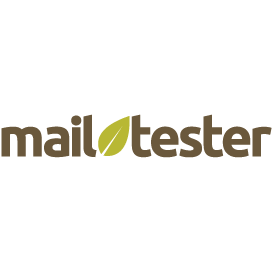Richard G
Verified User
I don't know if this is already known by everybody, but just to be sure, be aware of the requirements by Google and Yahoo as announced in October last year.
For Google, if your business sends more than 5,000 messages to Gmail addresses, you must adopt SPF, DKIM, and DMARC by February 2024. Yahoo will apply the same trio of requirements to “bulk senders” in the first quarter of 2024, though they have not defined what constitutes a bulk sender.
The new email requirements include both SPF and DKIM records for authenticating email-sending domains, a DMARC record for the domain, and a “From” header that matches either the SPF or DMARC record, known as “alignment.” In addition, marketers must keep spam rates below 0.3% and provide the ability to unsubscribe with a single click if the recipient chooses.
Here it's a bit more specific:
For the DMARC record you can copy the dns_txt.conf from:
to the
Create the /custom/ directory there yourself in case it might not exist.
Then add this line in the dns_txt.conf file in the custom directory:
Then it will be added when a new domain is created.
Use the docs to find out how to massive change existing DNS records.
Might be good if DA could build in a (maybe switchable) option in directadmin.conf to have this enabled or disabled by default so we don't need the custom conf anymore.
Be aware that if you run external namservers like Cloudflare or Vultr or others, you have to copy your SPF, DKIM and DMARC records to these nameservers or use the LEGO option from DA to do it automatically if possible.
For Google, if your business sends more than 5,000 messages to Gmail addresses, you must adopt SPF, DKIM, and DMARC by February 2024. Yahoo will apply the same trio of requirements to “bulk senders” in the first quarter of 2024, though they have not defined what constitutes a bulk sender.
The new email requirements include both SPF and DKIM records for authenticating email-sending domains, a DMARC record for the domain, and a “From” header that matches either the SPF or DMARC record, known as “alignment.” In addition, marketers must keep spam rates below 0.3% and provide the ability to unsubscribe with a single click if the recipient chooses.
Here it's a bit more specific:
- Authenticate all messages with DMARC (technically, authenticate all messages with SPF or DKIM aligned with the From domain)
- Send from a domain with a DMARC policy of at least p=none
- Have valid forward and reverse DNS that match each other
- Use the one-click unsubscribe header and an unsubscribe link in the footer
- Maintain a low spam rate of < 0.1%
- Encrypt your email (technically, require TLS)
For the DMARC record you can copy the dns_txt.conf from:
/usr/local/directadmin/data/templatesto the
/usr/local/directadmin/data/templates/custom/ directory.Create the /custom/ directory there yourself in case it might not exist.
Then add this line in the dns_txt.conf file in the custom directory:
_dmarc="v=DMARC1; p=none;"Then it will be added when a new domain is created.
Use the docs to find out how to massive change existing DNS records.
Might be good if DA could build in a (maybe switchable) option in directadmin.conf to have this enabled or disabled by default so we don't need the custom conf anymore.
Be aware that if you run external namservers like Cloudflare or Vultr or others, you have to copy your SPF, DKIM and DMARC records to these nameservers or use the LEGO option from DA to do it automatically if possible.
Last edited:
